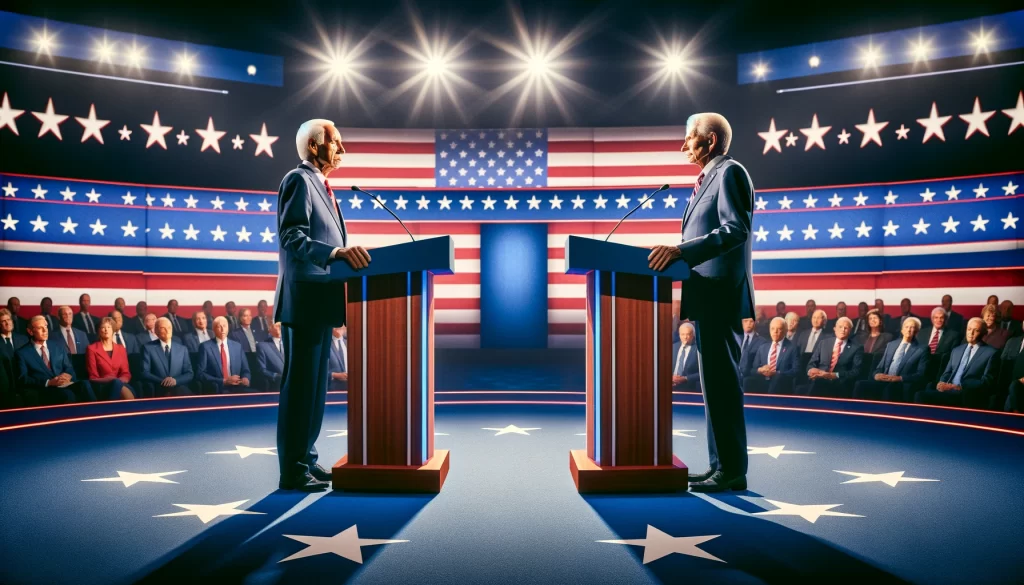
Over the past several months I have become increasingly discouraged as I watch the sad spectacle of the presidential election play out in the newspapers and on the electronic media. It seems the candidates are more interested in serving themselves than in serving the people. Each is convinced that he is the only one who can save the country. While one is obsessed with regaining the power of the president, the other is reluctant to relinquish it.
This has left me wondering if there’s not a better way to elect the president. As everyone knows we elect a president for four years and then they can be reelected for an additional four years. But this was not always the way our electoral process has been structured.
A brief history of presidential terms
Perhaps second only to slavery, the office of president was one of the most controversial subjects at the 1787 Constitutional Convention. There were extensive debates about the structure of the office, the power of the chief executive, and even if it should be a single person. There was a proposal put forward by Edmund Randolph of Virginia for a three-person executive committee to head the government.
There were proposals for a short-term presidency of one or two years, arguing that more frequent elections would ensure the chief executive was more responsible to the people. There were also proposals for longer terms such as 7 or even 15 years. The intent of longer terms was to provide the president with independence from the influence of special interests and provide for more stable government.
There is a popular misconception that Alexander Hamilton favored a president for life. While he advocated for a strong presidency with certain aspects of a monarch, he also recognized the importance of a fixed term and the provision for impeachment to safeguard the country against abuse of power.
After it became clear to most delegates that George Washington would become the first president, the convention decided on a four-year term for the president. The constitution as originally adopted did not explicitly state that the president can be reelected, nor did it prohibit reelection. Not all delegates were in favor of allowing the president to be reelected because they felt it would result in too much power being consolidated the hands of the single person. As often happens in politics, no decision was made, and the Constitution as adopted was silent on reelection.
The issue of term length did not end with the ratification of the constitution. The first proposed constitutional amendment to change the length of the presidential term was introduced in 1808. Since then, multiple amendments have been proposed to extend the term to five, six, seven or even eight years. By the early 1900s the single six-year term had become the dominant idea being proposed. Amendments to change the term of the presidential office were introduced as late as the 1990s. Although persistent in their reappearance, none have ever had any realistic chance of being approved.
George Washington set the precedent of serving only two terms by retiring to Mount Vernon at the end of eight years in office. This pattern was followed until Franklin Roosevelt ran for a third and then a fourth term. After Roosevelt’s death, the 22nd Amendment to the Constitution was passed by Congress in 1947, and ratified in 1951, limiting the president to two total terms in office.
Other countries have different patterns for their chief executive’s term of office. Parliamentary countries have no set term. Elections can be called, and the chief executive removed from office whenever confidence in the government has fallen, and the public demands a change. Other countries such as Mexico, the Philippines and Chile have a single six-year term for president.
If we were to consider a single six-year term for the US president how would that change things. Let’s look at a few of the pros and cons.
The arguments in favor of a single six-year term
The president would be relieved of the burden of an almost constant reelection campaign. With a single term, a president can focus on policy and governance without being distracted by the next election cycle. This may lead to bolder, more decisive leadership, unencumbered by the need to cater to special interest groups. Those groups may be less inclined to make large political contributions knowing that they hold no future sway over the actions of the president.
There may be potential for greater continuity in policymaking. Presidents could be more inclined to tackle unpopular long-term challenges head-on, rather than deferring them to a second term or even to their successor. The president may be more likely to engage in bipartisan programs knowing that there is no need to appease party radicals during a reelection process. The president could be more likely to engage in long term planning rather than worry about what will look good in the polls in the short term. This may result in fewer political decisions made just to improve reelection chances.
Not having to run for reelection would also give the president more time to work for the country and the citizens. The time and the effort put into planning campaigns, making speeches, and attending reelection events could be spent improving the government and the country. If the president has more time to work closely with Congress, then there could be less gridlock in Washington. In sum, the single six-year term may allow the president to be the statesman they all claim to be.
The arguments against a single six-year term
A single six-year term could diminish the accountability of the president to the electorate. In a traditional two-term system, presidents are incentivized to deliver on their promises and perform effectively to secure re-election. With only one term to serve, there may be less pressure for a president to maintain high levels of performance throughout their tenure. This could result in complacency or a lack of motivation to pursue ambitious reforms, knowing there won’t be a chance for the electorate to hold them accountable.
A single six-year term could disrupt the balance of power between the executive and legislative branches. With the absence of a potential second term, presidents may become more inclined to bypass Congress and govern through executive orders and unilateral actions. This could lead to increased polarization and gridlock, as Congress may resist executive overreach, exacerbating tensions between branches of government.
If the president proves to be inept or not acting in the best interests of the people and the nation, six years is a long time for that person to be in office. The only option would be impeachment and we know from recent experience that impeachment is a long and painful process frequently generating more ill will than good results.
And in conclusion…
So, would a single six-year presidential term be a good thing or a bad thing? Would it help us get out of our current political mess?
Perhaps it would have no impact at all. Perhaps it’s not the length of the presidential term, the number of terms the president serves, or even how we elect the president. Perhaps the real problem lies with us. It doesn’t matter how we elect our president if we don’t do a better job deciding who the candidates will be. It’s been said many times that people get the government they deserve. We all complain about it and yet we continue voting for the same type of people year after year.
Of all the people to blame for the current political situation, the one in the mirror is the one to whom we should look first. Because, after all, that’s the only person we can control.
And that is my grumpy opinion.

leigh shepherd
I’ve been worried about who you saw in the mirror for a while!